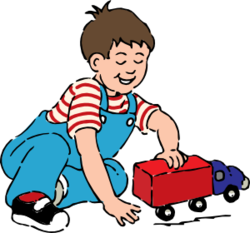
Find Out More
Parents & Educators
Are the toys you buy safe? Toy makers must make sure that they build safe toys to meet Canadian safety standards. However, unsafe toys sometimes make their way onto store shelves and into homes. Parents and guardians are the best filter for making sure your children get the safest toys.
Follow these safety tips when buying new or used toys, and how to keep your children safe throughout the life of the toy:
- Choose toys suitable for the child’s age group.
- Read and follow all warnings, safety messages and instructions that come with the toy.
- Inspect all toys for hazards like loose parts, broken pieces or sharp edges.
- Toys with small parts are dangerous for children under three years of age and for older children who still put things in their mouth.
- Avoid toys with cords, especially stretchy cords that are long enough to wrap around a child’s neck. Cords could strangle a child.
- Check that toys, like rattles and teethers, are large enough that they cannot get stuck in an infant’s throat.
- Take note of the manufacturer’s information before properly disposing of the packaging. The company’s name, where it was made, date purchased and all identifying codes should be kept handy in case there are recalls.
- Store toys that are for older children out of the reach of younger children.
- Teach children to keep play areas tidy and clutter free after playtime: no tripping and no small pieces forgotten and swallowed or pushed up in noses.
- Help children understand the proper use of a toy. Toy trucks, for example, do not race on walls or tables – they stay low to the ground.
- Check the condition of toys regularly to assure that there are no loose, broken or removable parts (including squeaky noisemakers, hardware, batteries or magnets).
Remember: Always supervise young children while they play and teach them how to use toys safely. It is worth the time and effort to apply the guidelines of common sense and supervision. Once they are in place, playing with toys can be safe, educational and most importantly, fun!


